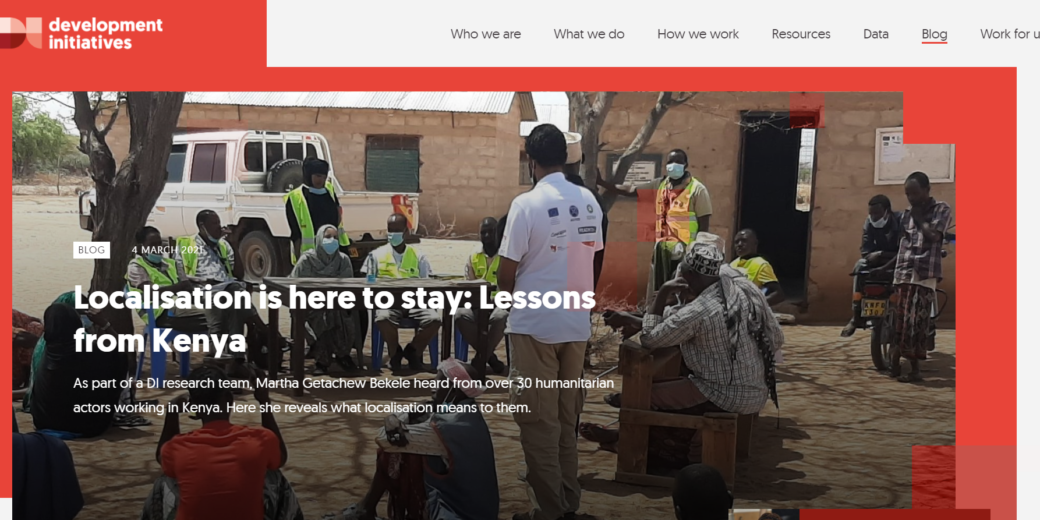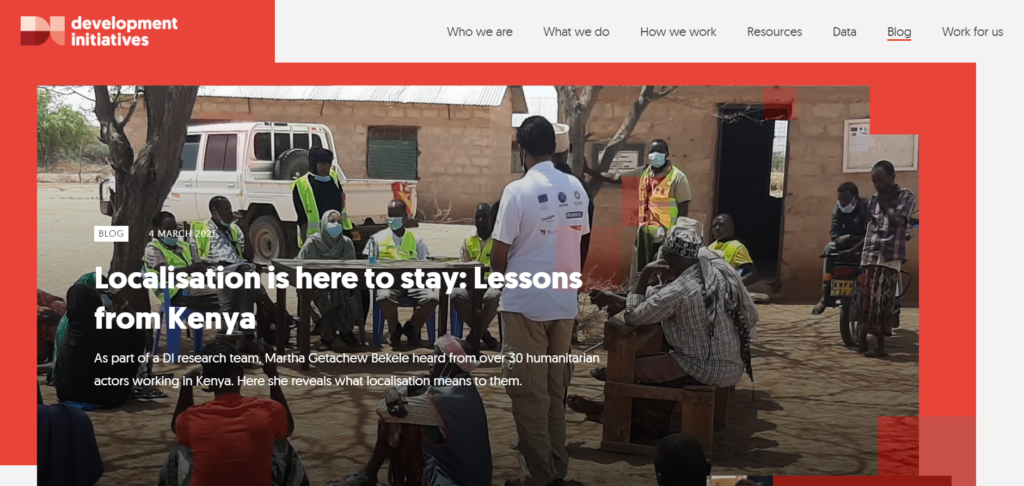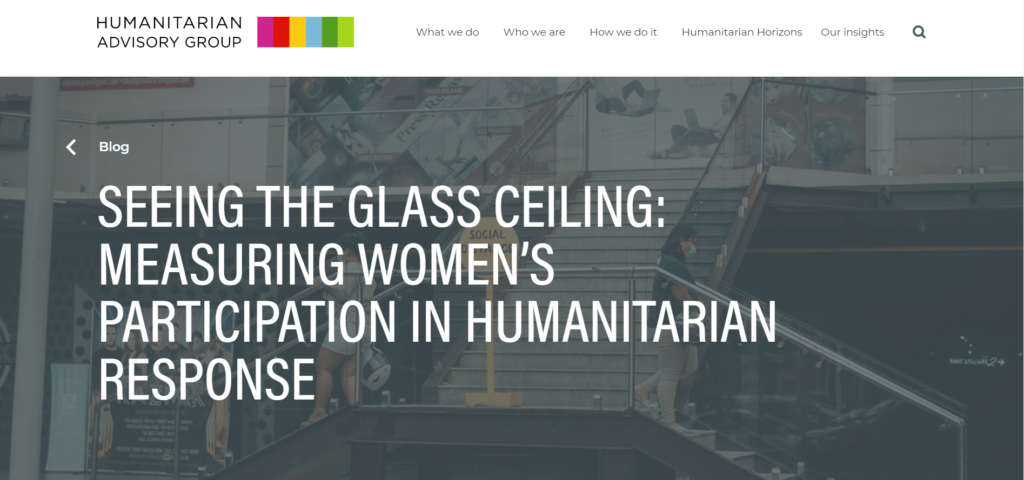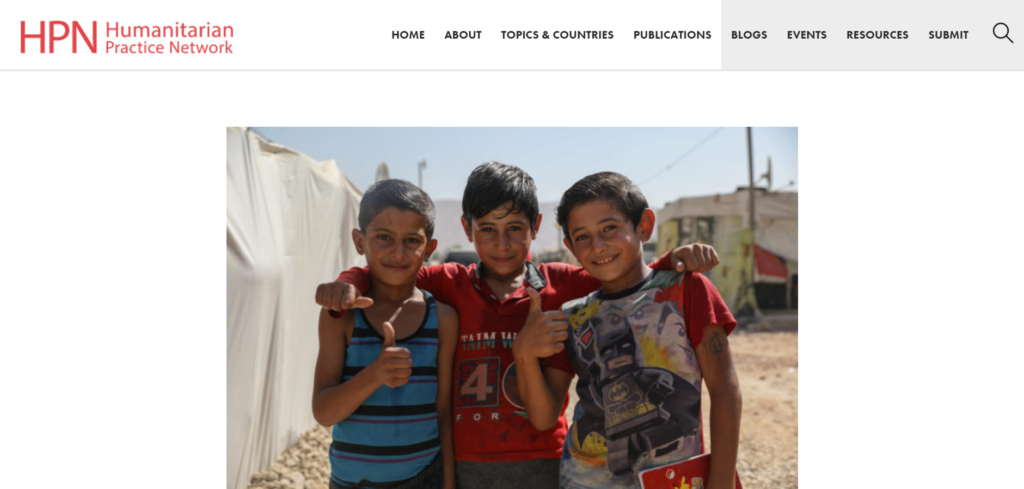“Localization is here to stay” five sector articles to read of March 2021
The 8th of March 2021, International Women’s day. The most powerful one I celebrated in the DRC, dancing and paying tribute to the power of women. A memory I cherish. I realized those were probably some of the strongest women I ever met in my life.
For my personal challenge to pick five articles this month, Women should be featuring in March. Measuring women’s participation in humanitarian response. However starting with an article, ablog with lessons from Kenya regarding localization.
Localisation is here to stay: Lessons from Kenya
Blog written by Martha Getachew Bekele. All agree on the benefits of locally led humanitarian action. If there is any crisis that has made the crucial role of local humanitarian actors in Kenya ever more apparent, it is the Covid-19 pandemic. Movement restrictions as a result of the pandemic, amid flooding and locust invasions, have left many of the frontline responders on their own. All the actors I heard from – both local actors and staff at international non-governmental organisations (INGOs) and UN agencies – agreed local frontline responders on the ground are a lot quicker, more culturally sensitive, cost effective, and more likely to be around for the longer term. However, they are often relegated to sub-contracting, while INGOs serve as an intermediary between local humanitarian actors and ‘back donors’ (the donor from whom funds originate).
Seeing the glass ceiling: measuring women’s participation in humanitarian response
Maya Tamoya, Maria Holtsberg, Pip Henty and Sara Philips wrote this blog at the Humanitarian advisory blog.
Women have not yet achieved parity in the humanitarian world. This applies, sadly, to women in humanitarian action, to women in humanitarian media, and to women in the context of COVID-19. Now, a new measurement framework developed by Humanitarian Advisory Group and UN Women has shown that, even when women and women’s rights organisations (WROs) are operationally active and supported to coordinate, advocate, and grow, their lack of access to the spaces where decisions are made continues to prevent transformative change that serves the interests of women and girls.
The framework measured four domains: transformative leadership, safe and meaningful participation; collective influencing and advocacy; and partnership, capacity and funding. It was piloted in the Philippines, where the impacts of COVID-19 have been among the most severe in Southeast Asia.
Read full article here.
Prospects for aid one year on from the pandemic
A contribution by Annalisa Prizzon. In mid-February, G7 members announced their new financial commitments to the Access to Covid-19 Tools (ACT) Accelerator (WHO) and its pillar for global vaccine procurement, the COVAX Facility. This made headlines, but this news is an exception. With governments struggling to get a handle on an unparalleled number of emergencies – the health crisis, an economic recession and children out of school – foreign aid has fallen even more down the political priority list over the past year.
In practice, aid is a small pot of money (OECD). However, many countries rely on it (ODI). Other financing options – foreign direct investment, workers’ remittances, and taxes – have fallen and are slow to recover. The International Monetary Fund (IMF) estimates that $290 billion of the external financing needs of sub-Saharan African countries for 2020-2023 are yet to be met.
Read full article here
Funding to end violence against children must be a global priority
An article by Elena Gaiaa and Amanda Rives. Donors have consistently underinvested in ending violence against children (EVAC), even knowing that long-term consequences of such violence amount to a staggering annual cost of up to $7 trillion globally. Although recent research shows funding has increased over recent years, huge shortfalls remain and needs are even more acute due to the Covid-19 pandemic. Concerns around spending on EVAC are sadly not new. In 2017, World Vision worked with several child-focused organisations to analyse how much Overseas Development Assistance (ODA) contributed directly to EVAC. The focus was simple: did governments keep their commitments from 2015, when they came together and promised to end child marriage and other forms of violence by 2030, regarding spending and the Sustainable Development Goals (SDGs)? The answer, disappointingly, was no.
Bringing more equality into aid and development studies: a view from Makerere University, Uganda
This blog, written by Farida T. Bena, was originally published on Kiliza on March 11, 2021. Two weeks later published on CDA blog, an action research and advisory organization dedicated to improving the effectiveness and accountability of peacebuilding, development, and humanitarian efforts wherever communities experience conflict.
A few months ago, Farida T. Bena wrote about how the international aid and development sector was addressing the double challenge of Covid-19 and mounting accusations of racism following the rise of the Black Lives Matter movement in the US. I recommended levelling the playing field between Northern and Southern academia to counteract the widespread belief that ‘developed’ nations know what is best for ‘developing’ countries. In particular, establishing joint Northern and Southern degrees in comparative development would in my view be a major step forward to ‘decolonise’ development knowledge and lay the ground for more equitable solidarity.
A few academics have signaled their interest in my idea so I have reached out to Professor Robert Senath Esuruku, Head of the Institute of Development Studies at Makerere University in Kampala, Uganda, one of Africa’s leading academic institutions, to discuss more. Here he shares his perspectives on Southern and Northern academia.





